matterscope
familiar spaces in unfamiliar ways
explore
about
Matterscope creates multi-layered educational and cultural experiences in virtual reality.
The theory of contextual learning states that people have a deeper understanding of information that is presented in an immediate, interactive, and engaging way.
Through Matterscope’s cross-media presentations, the user can simultaneously see photos, sketches, drawings, and animations embedded in context allowing for direct connections to be made.
Structured as a series of short experiences, aiming to integrate the use of virtual reality seamlessly into the flow of classrooms and exhibits as a supplement to conventional teaching tools.
The current prototype is conceived primarily for students of architecture and interior design, revealing the hidden stories of elements in the built environment that the students encounter every day.
Matterscope renders otherwise invisible information visible, showing familiar spaces in unfamiliar ways.
applications
in a classroom
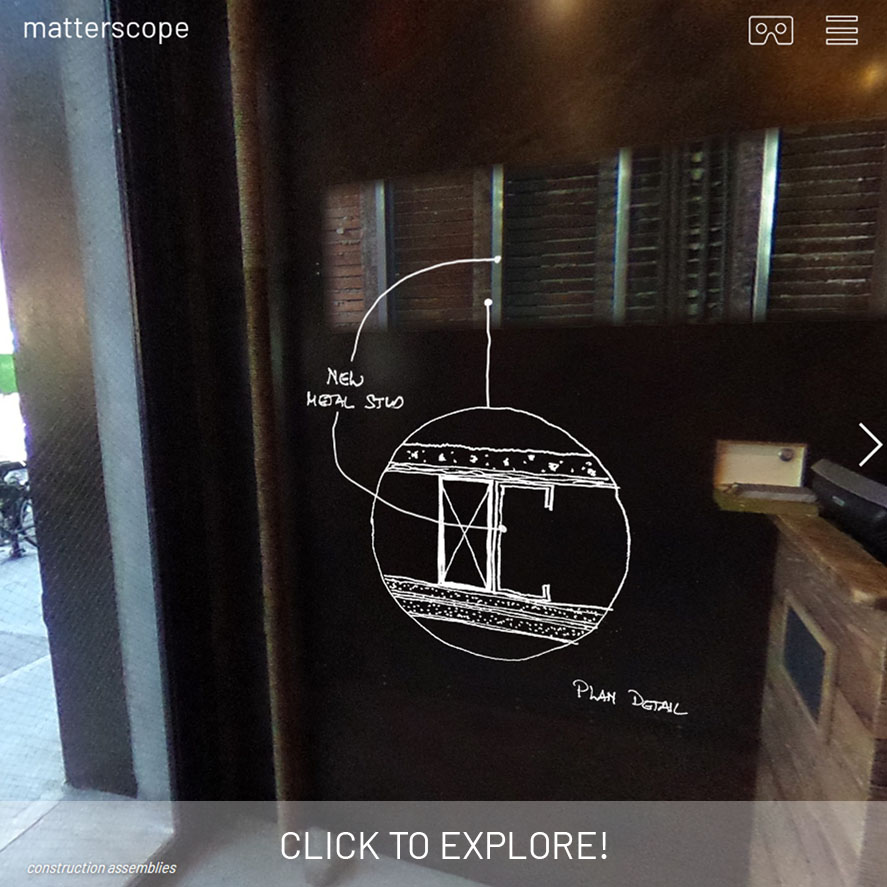
Our classroom application solves a common problem for the students: the lack of connections between the physical components of construction and architectural drawings.
By bringing the student virtually into the space with a before and after comparison as well as drawings, a more natural and immediate way of learning is achieved.
on site
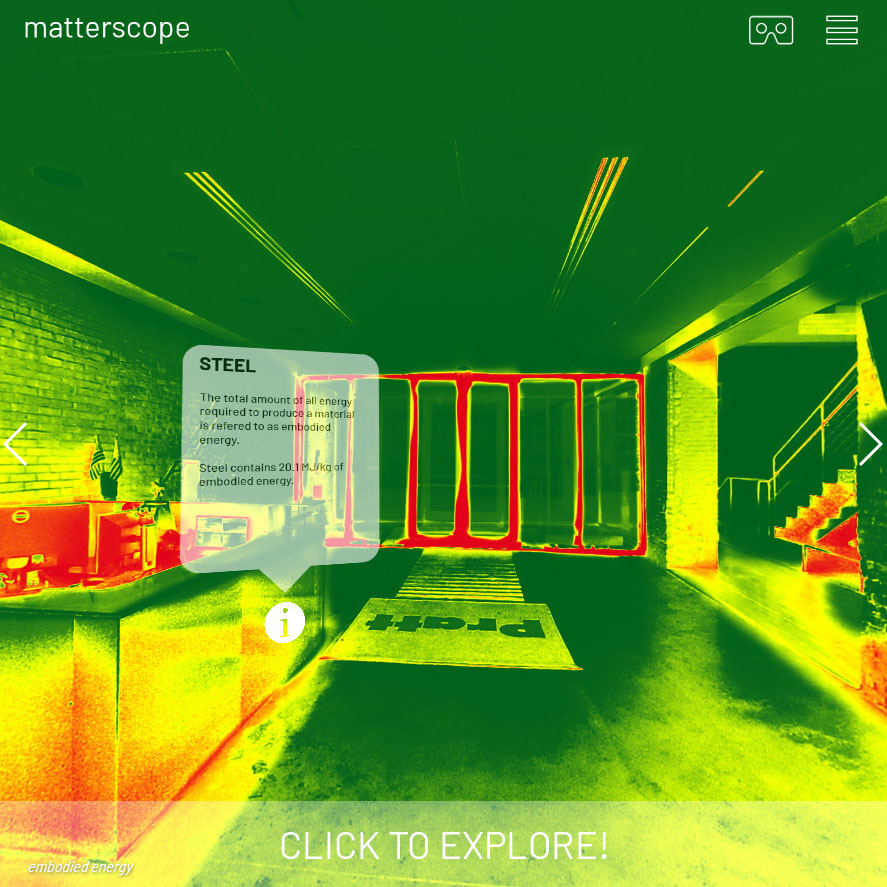
Physical locations can be enhanced by providing similar context and showing abstract concepts such as sustainability or building systems A user can access the information through a QR code or search an address and see what a specific building looked like in the past or witness an event that took place there.
at an exhibit
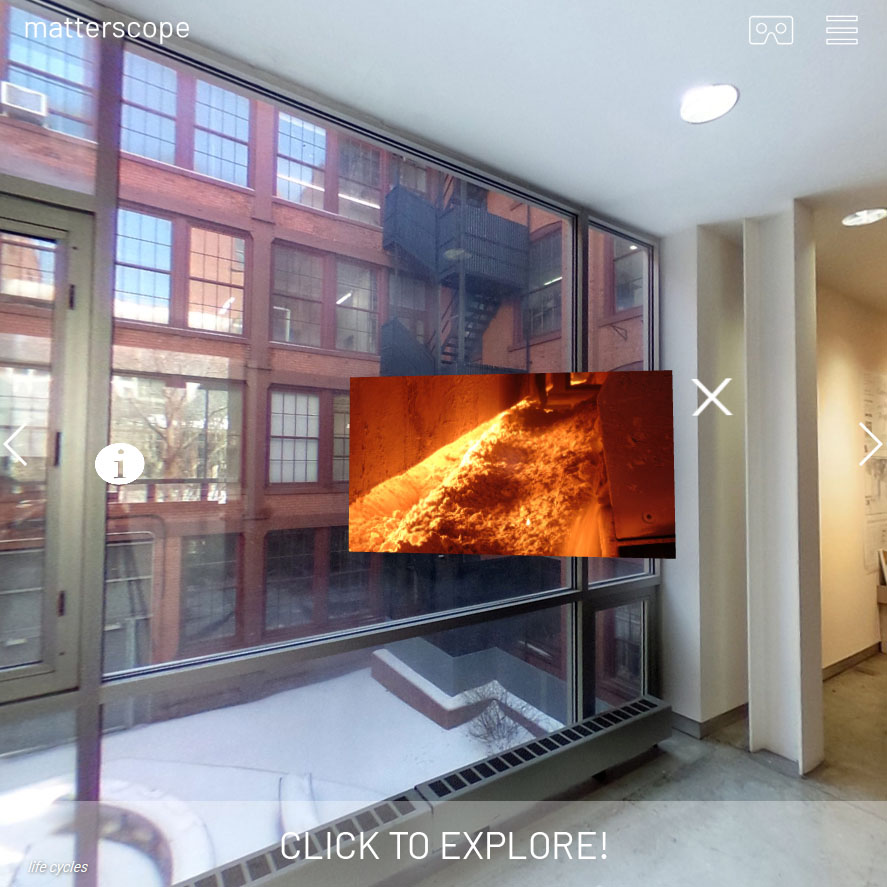
The system can be easily transferred and expanded to other subject matters, for example in an exhibit or a museum. Additional information, such as life cycles of materials are presented contextually. In a museum, a painting is not just the painting hanging by itself. Through Matterscope, the story of the painting becomes broader, and the audience sees the whole picture.
research & development
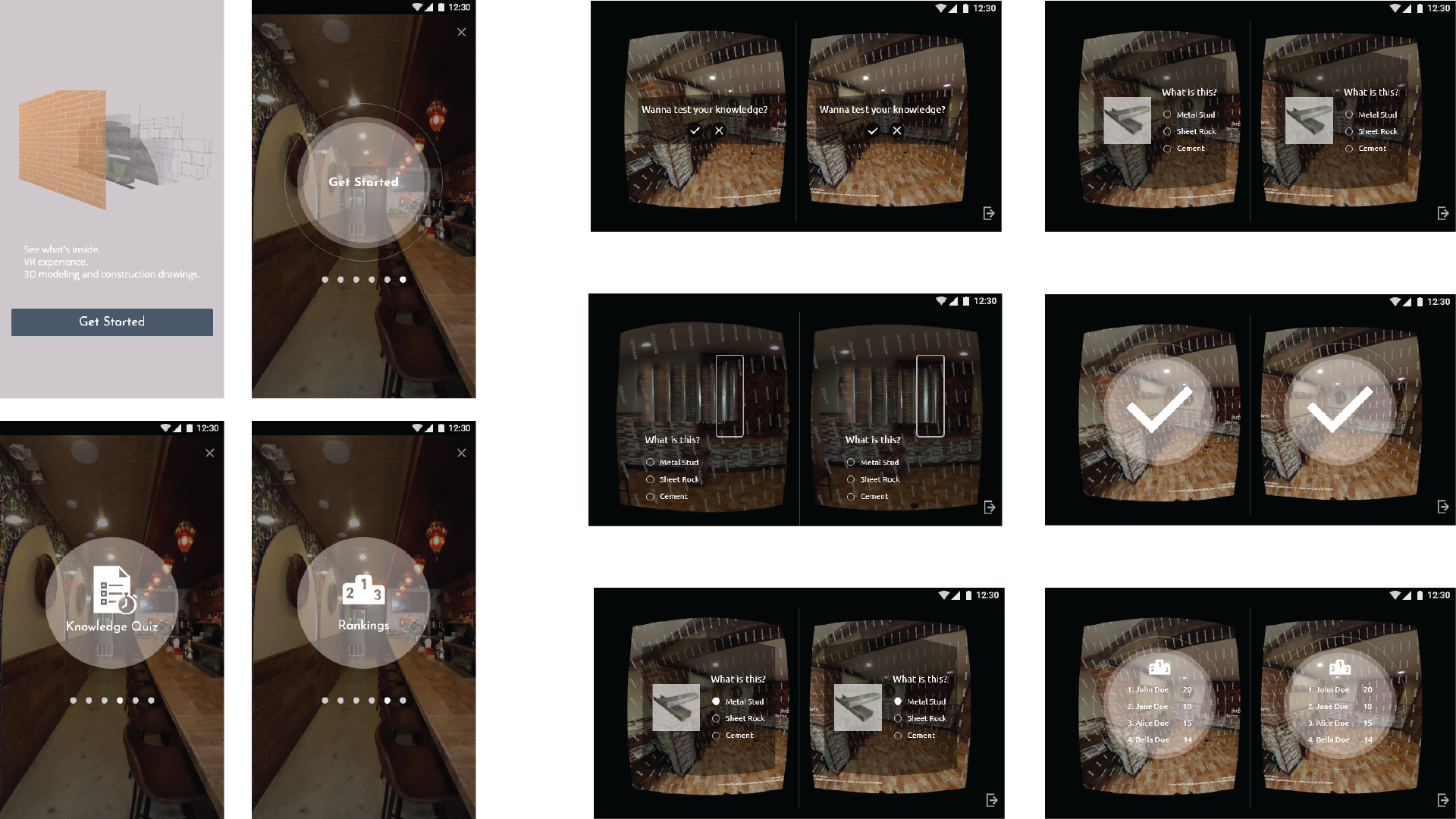
Matterscope’s technological approach was chosen with the common user in mind.
It is designed for mobile VR, delivering content either through a web browser or an app. This only requires a smart phone, head phones, and a Cardboard style viewer. When wearing a viewer, all user interactions are triggered by centering the view on integrated hotspots. If a viewer is unavailable, the experience is still accessible. The view is similar to looking at a camera on a smart phone, and all user interactions are touch based. In addition to being smart-phone compatible, all scenes and functions are accessible on tablets and computers.
The platform is built on a webVR viewer using typical browser languages - HTML, XML, JS with the possibility to integrate SQL databases.
Content is created through a multi-media mix of photographs, computer generated images, drawings, sketches, animations, and videos.
Information overlays and interactivity are integrated into each scene using XML and JS to create the illusion of the scene changing.
Games, both casual and serious, can be built on top of the virtual reality experiences, allowing for another level of interactivity as well as an opportunity for the users to be competitive with each other and follow their own success in learning. A storyboard layout for a game involving construction assemblies is shown on the left.
Further research and development on this project will include:
• Investigate and implement ways to add the ability for user input
• Explore augmented reality
• Develop for other platforms
• Develop voice control function
team
Christian Rietzke
Adjunct Associate Professor, Interior Design, Pratt Institute

Christian has been teaching for over ten years at Pratt Institute with a focus on presentation, drawing, and construction.
He is currently the coordinator for media classes of the Interior Design Department.
As a dedicated educator, he is always seeking ways to improve the learning experience, he is researching the application of virtual reality in education, design, and presentation of interior design and architectural projects.
Christian is a graduate of the architectural programs of Pratt Institute (M.Arch) and Münster School of Architecture (Dipl-Ing, Germany).
His work has been published in Domus, Icon Design, the New York Times, Bloomberg, as well as shown on Fox 5 News and in several exhibitions.
Michelle Htar
MFA Candidate, Interior Design, Pratt Institute

Michelle is a multidisciplinary designer who is eager to be part of all aspects of design from concept to completion. With a BFA in Industrial Design from Parsons, she is currently working towards her Interior Design MFA in Pratt Institute.
Born in Myanmar, and raised in Indonesia, she is an avid traveler and food enthusiast who enjoys taking photos along the way and brings a unique perspective to any projects she undertakes.
She has most recently exhibited work alongside artists and designers in the 2017 exhibit, You are Here NYC: Art Information and Mapping as well as participated in SOFA CHICAGO 2016 Connect Challenge.
Mapa Jaramillo-Arenas
MFA Candidate, Interior Design, Pratt Institute

Mapa is a passionate designer who values and practices experiential and concept driven narratives. With a background in Industrial Design (Universidad Javeriana in Bogota, Colombia), she is now pursuing her MFA in Interior Design at Pratt Institute.
As a decorated student, her work has been exhibited at the Noguchi Museum in New York City and most recently in China, at the Ordos International Conference for Culture and Creativity, where she received a Nomination Award.
As a film enthusiast and eager traveler, she believes cultural immersion to be one of a designer’s greatest assets. Having lived in different countries, and being exposed to multiplicity, has helped her gain new perspectives that she constantly tries to bring into her life and work.
Yuanyuan Song
MS Candidate, Integrated Digital Media, New York University
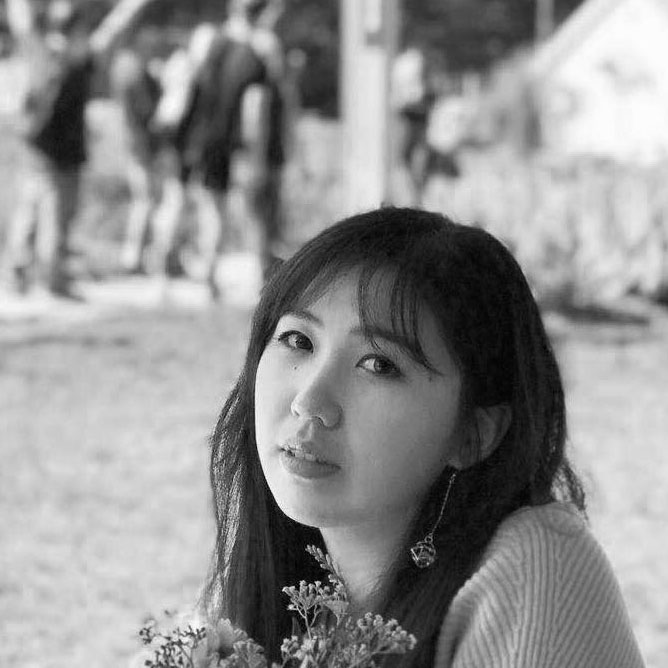
Yuanyuan Song, a candidate for Master of Science, Integrated Digital Media at NYU, dedicates herself to learning of VR, AR, and UX design after earning a bachelor degree of Interior Design at Pratt Institute.
With the latest technology such as virtual reality and interaction design, she believes interior design, as a traditional industry, will get more inspiration and opportunities.